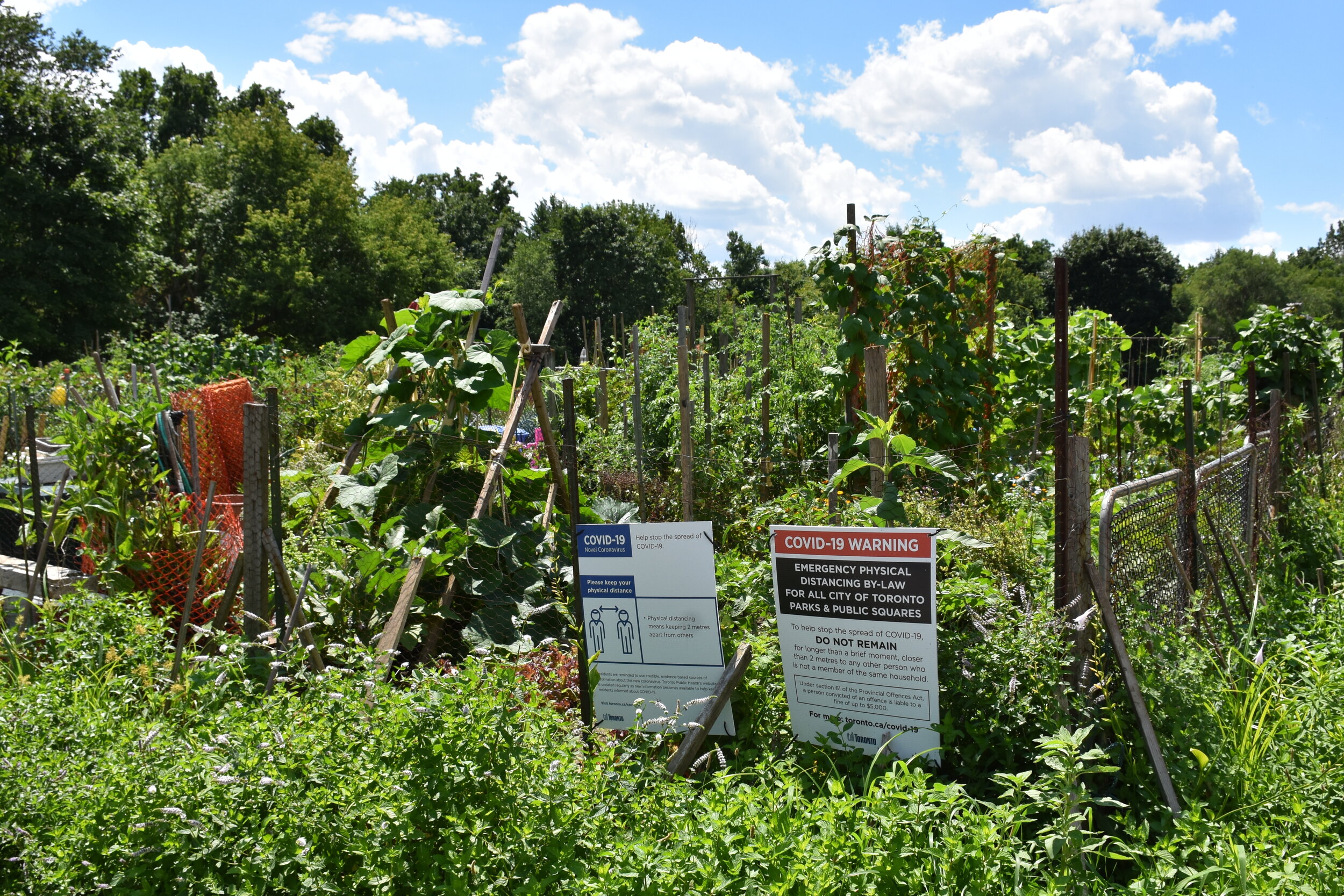COVID’s ‘Victory Gardens’
Photo credit/Mention de source: Samantha Lucchetta
Samantha Lucchetta
(FR) L'article suivant examine la réapparition du 'jardin de victoire', un type de jardinage popularisé au début du vingtième siècle dans le but d’atténuer les pénuries alimentaires des deux guerres mondiales. La pandémie actuelle du COVID-19 a provoqué aujourd’hui une augmentation spectaculaire de l'intérêt pour le jardinage: en effet, le public a éprouvé une forte inquiétude quant à d'éventuelles pénuries alimentaires. Cela a donné lieu aux 'jardins de victoire de COVID', qui renvoient donc aux jardins de victoire susmentionnés du vingtième siècle. Cet article examine également des efforts entrepris pour que les jardins communautaires soient considérés comme des services essentiels, ainsi que les avantages possibles de soutien à long terme des initiatives agricoles communautaires.
The spinning racks that once held many packets of vegetable seeds in my local nursery were completely barren. Just as spring was arriving and I was planning my yearly garden, the world was swept up in the frenzy that was the COVID-19 pandemic. Gardening, which was once considered an "old person's hobby", quickly became an important activity as anxieties about pandemic-induced food shortages emerged in the public sphere. Everyone had become novice gardeners overnight. People who had never even considered getting their hands dirty before were now trying to construct raised beds, sizeable containers, and hangers for a variety of edible plants. Some individuals even banded together and encouraged one another in the cultivation of 'COVID victory gardens'.
The victory garden concept is not new by any means. Dating back to the First World War, victory gardens were enthusiastically encouraged by national governments as a way of curbing wartime food shortages. As many soldiers during this era were farmers, the lack of agricultural labour meant that communities needed to transform any space they had available into their own sources of food. These victory gardens survived into the Great Depression, where they helped many struggling families, and into World War II, when nation states once again encouraged citizens to help war efforts by establishing a garden. By 1944, 40% of fresh vegetables consumed in the United States came from household and community gardens. Eventually, this number declined as the bountiful plots of potatoes, tomatoes, and other veggies were replaced by the lawns and suburban driveways of the 1950s.
It is ironically fitting that the victory garden, created in the era of the Spanish flu, would re-emerge during another pandemic.
Despite the increased interest, the Ontario government considered community gardens and allotments recreational and non-essential. After successful petitioning from Toronto Urban Growers (TUGs), Sustain Ontario, and the Green Party, gardens became considered essential services as of April 25. Meanwhile, Toronto-based food security organizations, like FoodShare Toronto and Black Creek Community Farm, pushed to supply more food to more families through food box programs. Even at the University of Toronto's St. George campus, student-led urban agriculture initiatives, like Dig In! Campus Agriculture, continued to tend to campus gardens despite COVID-19. History has repeated itself - the victory garden has re-emerged as a unifier in the fight against a common enemy.
Reasons for establishing these gardens existed before the pandemic and will continue to exist afterwards. Urban agriculture has continually been suggested as a way to mitigate the environmentally deleterious effects of modern industrial farming. Eating locally cuts down on the greenhouse gas emissions produced by transporting food, and what is more local than your own backyard? The morale boosting qualities of gardening transcends both World Wars and two pandemics. Growing, sharing, cooking, and discussing food brings communities together, bridges socio-cultural divides, and provides educational opportunities, especially to youth from systemically neglected groups. Not to mention, gardens are often a haven for pollinator species. The list of benefits from growing one's own food is a long one.
Gardening has become a part of the new normal today, just as it became a 'new normal' during the wars and recession of the 20th century. As the summer of 2020 becomes autumn, numerous households will be reaping their first ever harvests. For me, a gardener of several years and an urban agriculture enthusiast, I hope that these households make these victory harvests into an annual tradition and that many cities can eventually reap the sustainable benefits of supporting local agriculture initiatives.

